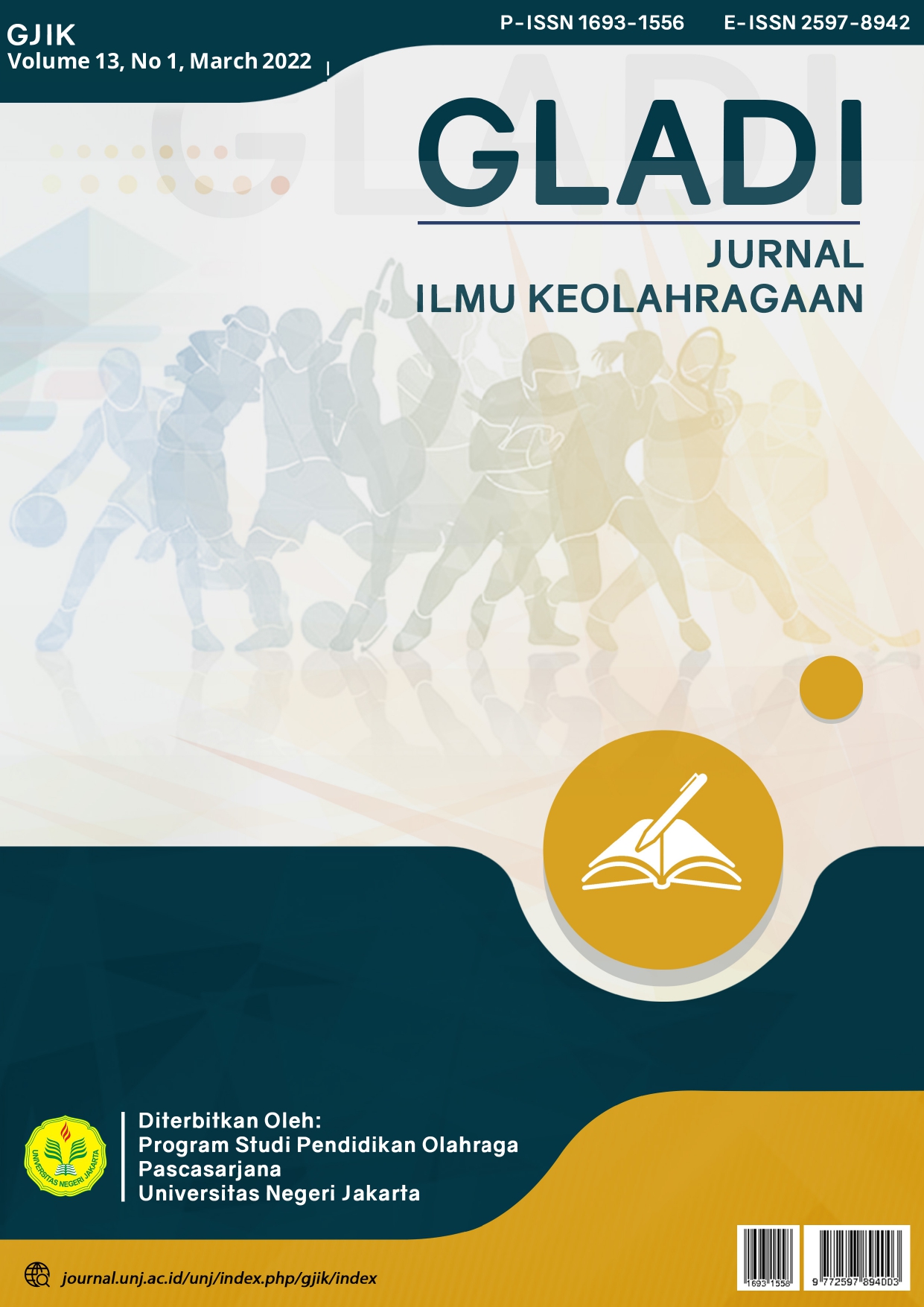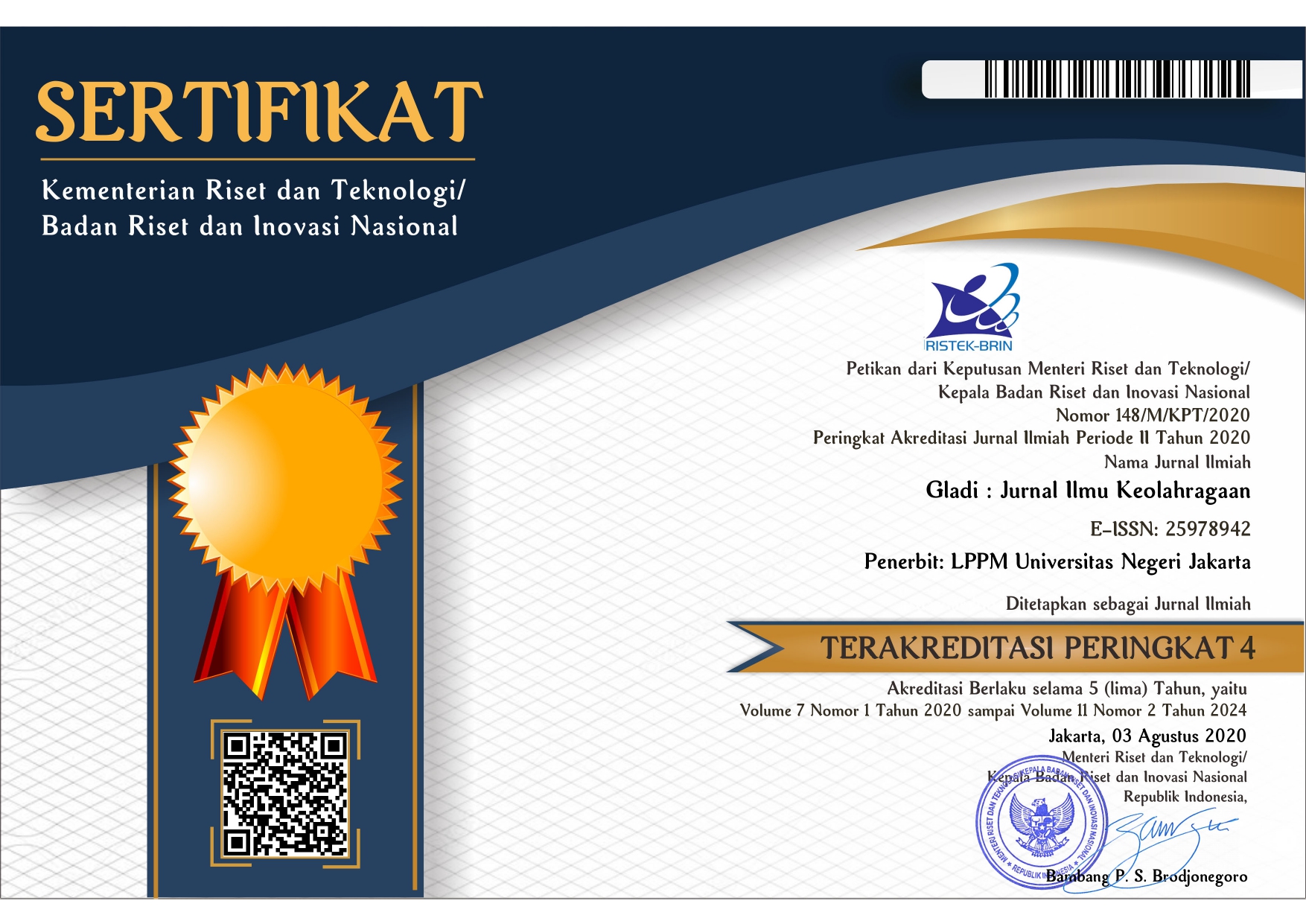Dribbling basketball learning model Based on neuroscience
Keywords:
Learning model, basketball dribbling, neuroscienceAbstract
The aim of this research and development is to produce a learning model of dribbling basketball based on neuroscience for Junior High School students and determine the effectiveness of the resulting model. This study uses Research & Development (R&D) of ADDIE model. The results of the study resulted in a product in the form learning model of dribbling basketball based on neuroscience that had been validated and revised by experts as many as 20 models. And in this application, the research subjects used were 60 male students at seventh grade of Al Fityan Boarding School Bogor. Data collection began with interviewing the Physical Education teacher at the Junior High School, then the initial test was carried out. Test the effectiveness of the model using an observation instrument used to determine the ability to learn a model of dribbling basketball before and after the treatment of neuroscience based. The initial test obtained that the student’s basketball dribbling learning outcomes were 82,33. In the significance test of the difference between with SPSS 26, it mean ( 11,617) the difference between the pre-test and post-test. And the result of t-count (18,824), df (59) and p-value (0,00 < 0,05) which means there is a significant difference between before and after the the treatment.
Downloads
References
Burhein.E. Aktivitas Permainan Tradisional Berbasis Neurosains Learning Sebagai Pendidikan Karakter Bagi Anak Tunalaras.Universitas Negeri Yogyakarta: Jurnal Pembelajaran Olahraga Volume 3 Nomor 1 Tahun (2017) Cet. II (Jakarta: Gramedia Pustaka Utama, 2002), hlm. 25-29.
Escamilla, R.F., Fleisig, G.S., Yamashiro, K., Mikla, T., Dunning, R., Paulos, L. and Andrews, J.R. (2010) Effects of a 4-week youth baseball conditioning program on throwing velocity. Journal of Strength and Conditioning Research 24, 3247-3254.
Harsono. (1988) Aspek-Aspek Psikologis Dalam Coaching. Jakarta: P2LPTK Depdikbud.
Idrus, Muhammad. (2007). Metode Penelitian Ilmu-Ilmu Sosial (Pendekatan Kualitatif dan Kuantitatif).Yogyakarta :UII Press Yogyakarta.
Mahendra, A. (2009). Asas dan Falsafah Pendidikan Jasmani. Bandung: FPOK UPI.
Sarwono dan Ismaryati (1999:43), dalam Gantara, Ega. (2012). Perbandingan Antara Model Pembelajaran Langsung Dan Model Pembelajaran Kooperatif Terhadap Penguasaan Gerak Lompat Jauh Di Kelas VII SMP Karya Pembangunan Baros Kabupaten Bandung. Bandung: UPI.
Schunk, D. H. (2012). Learning theories: An educational perspective. In Reading (Vol. 5). Retrieved from http://www.amazon.com/Learning-Theories-Educational-Perspective-6th/dp/0137071957.
Sugiyono. (2010). Metode Penelitian Pendidikan (Pendekatan Kuantitatif, Kualitatif dan R & D). Penerbit CV. Alfabeta: Bandung.
Wathon, A. (2016). Neurosains dalam pendidikan. JURNAL LENTERA: Kajian Keagamaan, Keilmuan Dan Teknologi, 14(1), 284–294. Retrieved from https://www.neliti.com/publications/177272/neurosains-dalam-pendidikan
Yusmawati, Y., Rihatno, T., & Rismawanti, R. (2020). Meningkatkan Hasil Belajar Gerak Dasar Melempar Dengan Media Audio Visual Pada Siswa Kelas Iii Sdn 03 Jelambar Baru Jakarta Barat. Jurnal Segar, 8(2), 80–89. https://doi.org/10.21009/segar/0802.04







